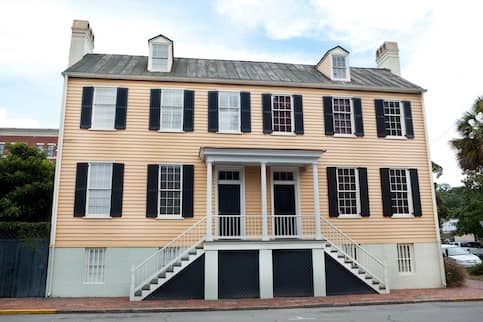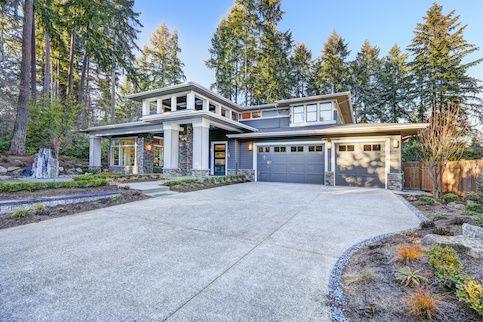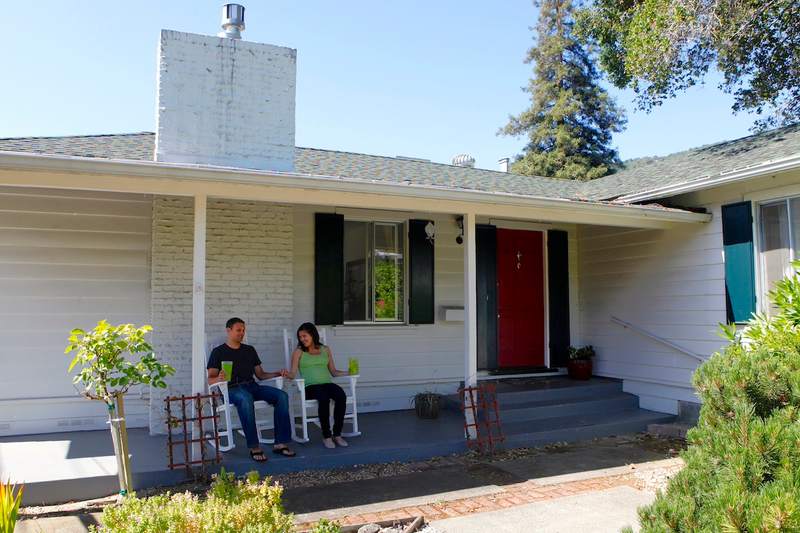VA loans are a type of home loan meant to help veterans, active-duty service members and qualifying spouses find affordable housing and mortgage financing.
If you’re an active-duty service member, reservist, National Guard personnel, veteran or qualifying surviving spouse who can secure a certificate of eligibility, you may benefit from a low – or even a zero – down payment, limited closing costs, lower mortgage rates and no mortgage insurance requirement when financing through the VA home loan program.
As a borrower, you’ll also need to make sure you understand and follow the VA loan occupancy requirements.
Let’s take a closer look at what the VA loan occupancy requirements are and what exceptions are allowed.
What Are The VA Loan Occupancy Requirements?
One occupancy requirement of VA loans is that you can’t use the real estate property as a second home, vacation home or investment property. When you apply for and close on your VA loan, you’ll need to certify to your lender in writing that you’ll be using the property or home as your primary residence.
You must also agree to move into your new home within a reasonable time – i.e., 60 days after loan closing. The Department of Veterans Affairs (VA) does exempt some occupancy types from this “reasonable time” requirement to accommodate deployment, active-duty status, temporary assignments and other factors that are specific to active military members and their families.
What Is The Required Occupancy Time?
Under VA Form 26-1802a, the VA will require that you live in your home for at least a year as your primary residence. But you’ll also be provided with instructions should you need to move, sell or rent the property before the end of the first year of homeownership.
Does The VA Check Occupancy?
During the VA loan application process – and when you close on your home purchase – you’ll be required to sign VA Form 26-1820 and VA Form 26-1802a. These two documents indicate that you, as the home buyer, intend to personally reside in the house as your primary residence and use the property as your main address.
This is usually all the certification the VA requires unless the VA or your lender has a reason to question your occupancy. In those cases, the lender will need to determine whether you’re occupying the property as intended.
Guide to VA Loans
Discover a more affordable loan option for United States Veterans, Service Members and spouses.
See What You Qualify For
Buy A Home
Discover mortgage options that fit your unique financial needs.

Refinance
Refinance your mortgage to have more money for what matters.
Tap Into Equity
Use your home’s equity and unlock cash to achieve your goals.
Exceptions To VA Loan Occupancy Requirements
You may find that you need more than 60 days to begin occupying your new home after you’ve closed on the loan. If your circumstances qualify, the VA may allow for an exception to its occupancy requirements.
However, the VA generally doesn’t allow a specific date of occupancy beyond 12 months. So if you, a spouse or a dependent can’t move into your home within 1 year, you’ll probably need to wait to apply for a VA loan or use another type of mortgage.
Spouse Occupancy
If you’re actively deployed – or temporarily assigned to a military post or non-military job far away from your permanent location – you can still meet the VA loan occupancy requirements if your spouse is able to occupy the home within 60 days.
Dependent Child Occupancy
You can also have your child or other dependent live in your VA loan–backed primary residence if you’re unable to occupy the home within 60 days.
However, to satisfy the occupancy requirement, the dependent’s legal guardian – or your attorney – will need to certify in writing that the dependent will be residing in your home.
Intermittent Occupancy
As a military service member, your home occupancy will likely be interrupted by active-duty deployment or temporary assignments. While you may not be able to reside in your home on a daily basis, intermittent occupancy is allowed so long as you:
- Can show you use the property as your primary address
- Have lived there continuously in the past
- Aren’t using the property as a second home or seasonal vacation property
- Haven’t moved – nor intend to move – to another primary residence elsewhere
Delayed Occupancy
Some qualifying circumstances and living situations may make it difficult – if not impossible – for you to occupy your home before the 60-day mark.
If you can let your lender know the event that’s preventing you from moving into your home during the reasonable time frame and provide a specific date for when you can assume occupancy, you may qualify for one of the following exceptions:
- Active duty: If you’re on temporary duty, you can purchase a home in your permanent location so long as you intend to occupy the home as your primary residence at the completion of your deployment or assignment.
- Home improvements or property repairs: If extensive repairs will prevent you from moving in earlier, you may be able to occupy the home – or reoccupy the home if you’re refinancing – after the 60-day requirement.
Once repairs and improvements are completed, you’ll be required to use the home as your primary residence – you can’t sell, rent or use the property as a second home or vacation home. If you’re taking out a VA cash-out refinance, you’ll need to continue using the home as your primary residence.
Retirement Occupancy
You can qualify for an occupancy delay on a home you plan to move into after you retire so long as you:
- Are retiring in the next 12 months
- Give your lender a copy of your application for retirement
- Provide proof to your lender that your retirement income can cover your monthly mortgage payments, living expenses and other debts you may have
Rental Occupancy
You can rent out your VA loan–financed property if you’ve resided in the home for 12 months or received a new assignment before the year mark in a location that’s too far from your primary residence to commute.
The tenant doesn’t have to be a service member nor do they need to be employed by the military.
VA Streamline Refinance Or IRRRL
Let’s say you’ve been reassigned to a new duty station, and you want to keep renting out your existing home while you purchase a home in your new permanent location.
You can take out a VA Streamline Refinance — also known as a VA Interest Rate Reduction Refinance Loan (IRRRL) – which can help decrease your monthly payment by either lowering your interest rate or switching your mortgage from an adjustable-rate mortgage (ARM) to a fixed-rate mortgage.
With a VA IRRRL, you become exempt from the VA occupancy rules that state you must continue using the property as your primary residence. This will allow you to apply for another VA home loan without selling your existing home.
To apply for a VA Streamline Refinance, you’ll need to have made mortgage payments for 6 consecutive months on your existing property.
The Bottom Line
The VA loan program offers many benefits to help military veterans, active service members, reservists, National Guard personnel and qualifying surviving spouses in their journey to become homeowners or refinance their primary residence.
In addition to you qualifying for a VA loan, though, your specific circumstances will also need to meet the VA loan occupancy requirements. So it’s important that you know how soon you’re required to move into your home, how long you’ll need to reside there before selling or renting, and what happens if you’re deployed or reassigned to a temporary or permanent position in another state or country.
If you’re curious what you qualify for, starting a mortgage application can help you determine what financing options you’re eligible for and how much home you’re approved for.

Victoria Araj
Victoria Araj is a Staff Writer for Rocket Companies who has held roles in mortgage banking, public relations and more in her 15-plus years of experience. She has a bachelor’s degree in journalism with an emphasis in political science from Michigan State University, and a master’s degree in public administration from the University of Michigan.












